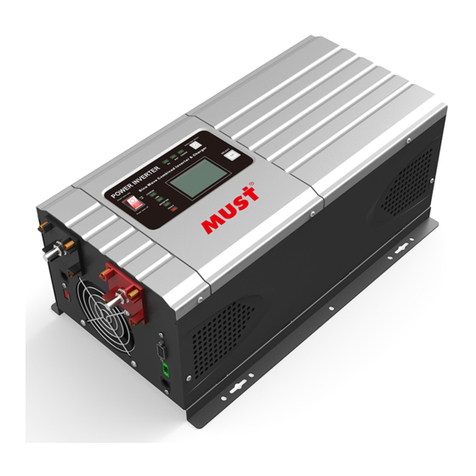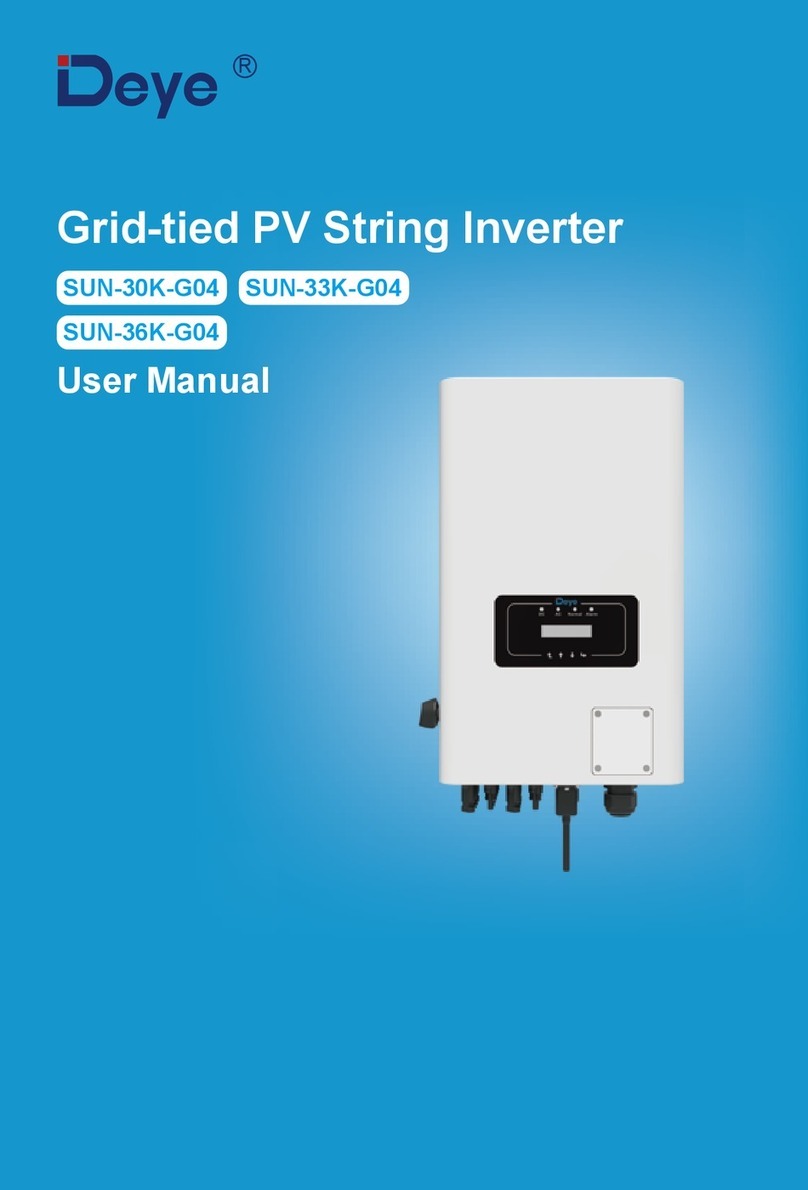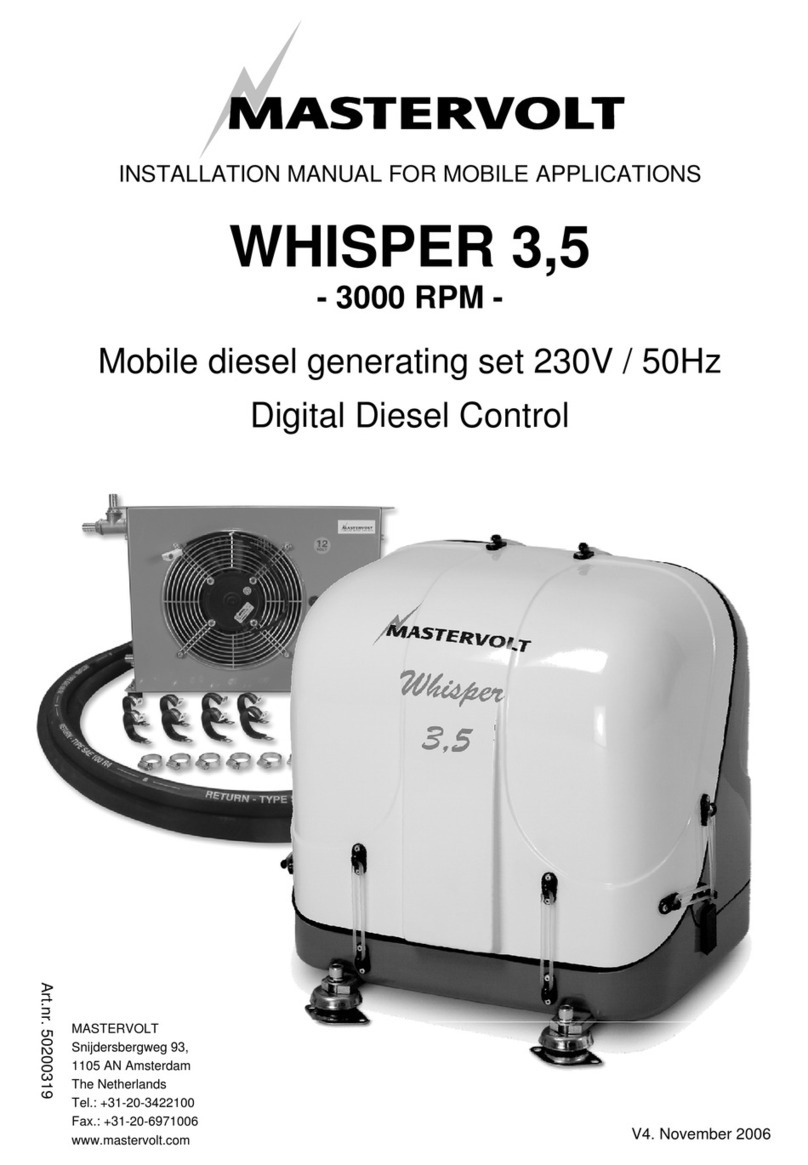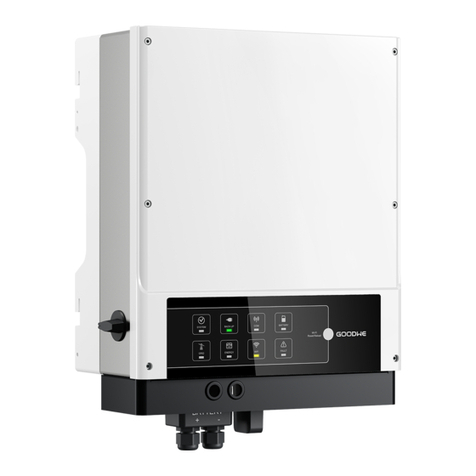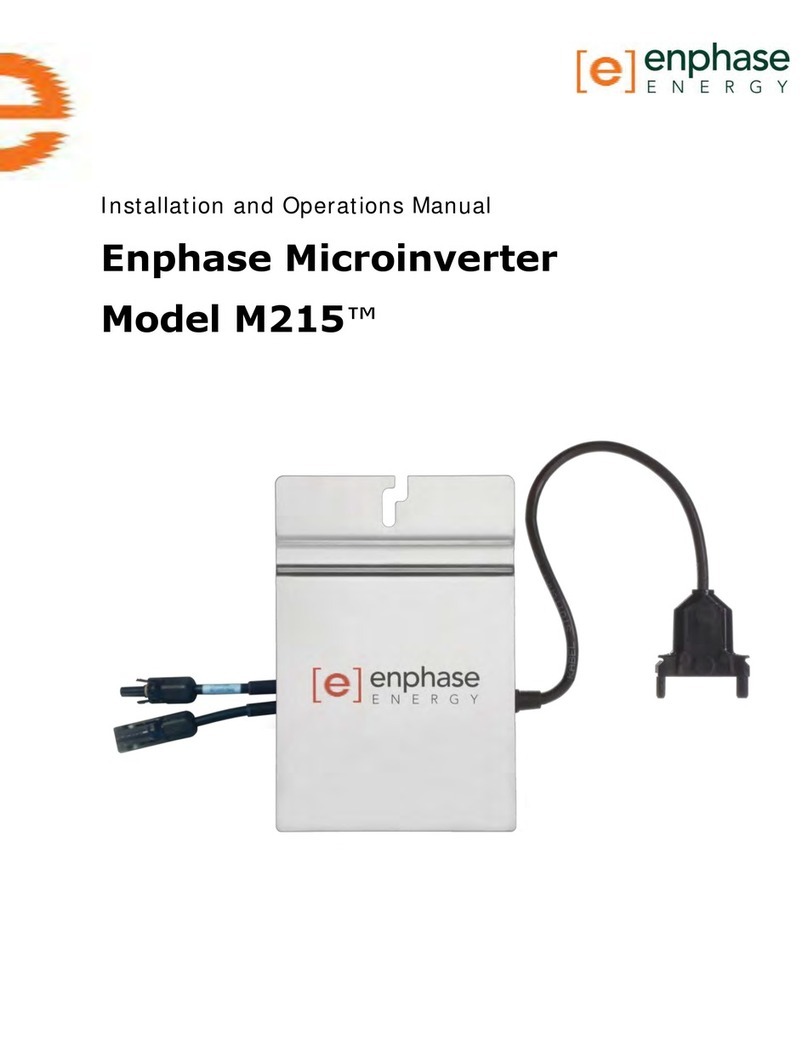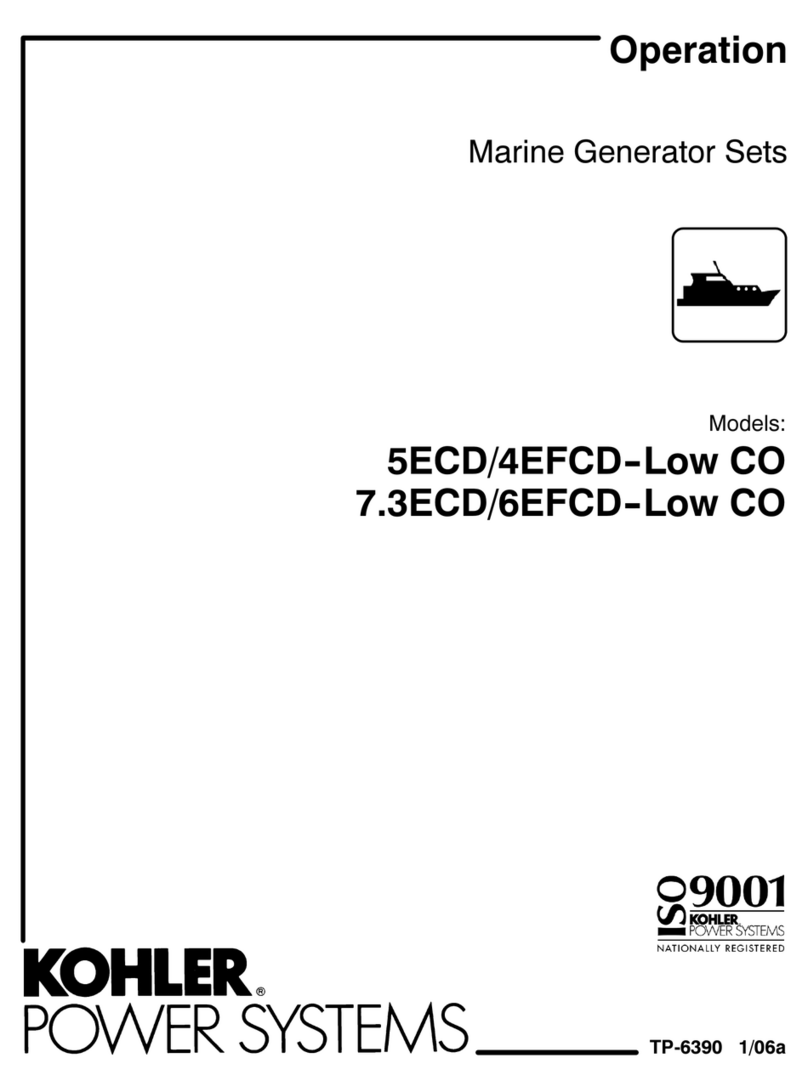FXA FXAEP2800I User manual

FXAEP2800I
Instruction manual (Original instructions) GB pg 7-17
Käyttöohje (Alkuperäisten ohjeiden käännös) FI pg 18-29
Bruksanvisning (Översättning av originalinstruktionerna) SE pg 30-40
Bruksanvisning (Oversettelse av de opprinnelige instruksjonene) NO pg 41-52
Руководство пользователя (Перевод исходных инструкций) RU pg 53-66
Kasutusjuhend (Tõlgitud originaal juhendist) EE pg 67-78
Instrukcijas (Tulkojums no oriģinālvalodas) LV pg 79-90
Instaliavimo instrukcijos (Vertimas originali instrukcija) LT pg 91-102
Instrukcja obsługi (oryginalna instrukcja) PL pg 103-115

2
(1)
11
32
9
5
4
13
8
7
14
6
12
1
10
(2) (3)

3
(8)
(4)
Fuel Filter Tank Cap
(5)
(6)
OFF
ON
(7)
1 2 3 4 5 6
7

4
(9)
CHOKE
OPEN CLOSED
(10)
(11)
CHOKE
OPEN CLOSED
(12)
(13)
OFF
ON
(14)
(15) (16)

5
(17) (19)
(18)
(20) (21)

6
IPORTANT! Read all safety warnings, instructions, illustrations and specifications provided with this
power tool.
TÄRKEÄÄ! Lue tarkkaavaisesti kaikki tämän työkalun kanssa toimitetut varoitukset, ohjeet ja
spesifikaatiot, ja katso lisäksi kuvat.
VIKTIGT! Läs uppmärksamt alla varningar, instruktioner och specifikationer som bifogas med
detta verktyg och studera bilderna.
VIKTIG! Les nøye gjennom alle advarslene, instruksene og spesifikasjonene som følger med
verktøyet, og se på tegningene.
ВАЖНО! Пpoчтитe вce yкaзaния, инcтpyкции, иллюcтpaции и cпeцификaции, поставляемые
c данным изделием.
TÄHTIS! Lugege läbi kõik elektrilise tööriista kohta esitatud ohuhoiatused ning tutvuge
tööriista jooniste ja tehniliste andmetega.
SVARĪGI! Izlasiet visus drošības brīdinājumus, instrukcijas, specifikācijas un apskatiet attēlus šī
elektroinstrumenta dokumentācijā.
SVARBU! Perskaitykite visus saugos įspėjimus, visas instrukcijas, paveikslėlius ir techninius
reikalavimus, pateikiamus su šiuo elektriniu įrankiu.
WAŻNE! Prosimy przeczytać wszystkie dotyczące narzędzia ostrzeżenia i instrukcje oraz
przestudiować ilustracje i specyfikację.

7
INTRODUCTION
Thankyou for purchasing this product which has
passed through our extensive quality assurance
process. Every care has been taken to ensure that it
reaches you in perfect condition.
SAFETY FIRST
Before attempting to operate this power tool the
following basic safety precautions should always be
taken to reduce the risk of fire, electric shock and
personal injury. It is important to read the instruction
manual to understand the application, limitations and
potential hazards associated with this tool.
CERTIFICATE OF GUARANTEE
This product is guaranteed for a period of 2 Years,
with effect from the date of purchase and applies only
to the original purchaser. This guarantee only applies
to defects arising from, defective materials and or
faulty workmanship that become evident during the
guarantee period only and does not include
consumable items. The manufacturer will repair or
replace the product at their discretion subject to the
following. That the product has been used in
accordance with the guide lines as detailed in the
product manual and that it has not been
subjected to misuse, abuse or used for a purpose for
which it was not intended. That it has not been taken
apart or tampered with in any way whatsoever or has
been serviced by unauthorised persons or has been
used for hire purposes. Transit damage is excluded
from this guarantee, for such damage the transport
company is responsible. Claims made under this
guarantee must be made in the first instance, directly
to the retailer within the guarantee period. Only under
exceptional circumstances should the product be
returned to the manufacturer. In these case it shall be
the consumer’s responsibility to return the product at
their cost ensuring that the product is adequately
packed to prevent transit damage and must be
accompanied with a brief description of the fault and
a copy of the receipt or other proof of purchase. The
manufacturer shall not be liable for any special,
exemplary, direct, indirect, incidental, or consequential
loss or damage under this guarantee. This guarantee
is in addition to and does not affect any rights, which
the consumer may have by virtue of the Sale of Goods
Act 1973 as amended 1975 and 1999.
STATUTORY RIGHTS
This guarantee is in addition to and in no way affects
your statutory rights.
PRODUCT DISPOSAL
When this product reaches the end of it’s life or is
disposed of for any other reason, it must not be
disposed of in household waste. In order to preserve
natural resources, and to minimise adverse
environmental impact, please recycle or dispose of
this product in an environmentally friendly way. It
should be taken to your local waste recycling centre
or other authorised collection and disposal facility.
If in doubt consult your local waste authority for
information regarding available recycling and / or
disposal options.
I PORTANT SAFETY INSTRUCTIONS
The purpose of safety rules is to attract your
attention to possible dangers. The safety symbols and
the explanations with them, require your careful
attention and understanding. The safety warnings do
not by themselves eliminate any danger. The
instruction or warnings they give are not substitutes
for proper accident prevention measures.
ailure to obey a safety warning can result in serious
injury to yourself or to others. Always follow the safety
precautions to reduce the risk of fire, electric shock
and personal injury.
Do not attempt to operate this tool until you have read
thoroughly and completely understood the safety
rules, etc. contained in this manual. ailure to comply
can result in accidents involving fire, electric shock or
serious personal injury. Save this Owners Operating
Manual and review it frequently for continual safe
operation and for instructing others who may use this
tool.
DANGER: CARBON ONOXIDE.
Using a generator indoors CAN KILL YOU IN
MINUTES.
Generator exhaust contains high levels of carbon
monoxide (CO), a poisonous gas you cannot see or
smell. If you can smell the generator exhaust, you are
breathing CO. But even if you cannot smell the
exhaust, you could be breathing CO.
Never use a generator inside homes, garages,
crawlspaces, or other partly enclosed areas. Deadly
levels of carbon monoxide can build up in these
areas. Using a fan or opening windows and doors
does NOT supply enough fresh air.
ONLY use a generator outdoors and far away from
open windows, doors, and vents. These openings can
pull in generator exhaust.
Even when you use a generator correctly, CO may
leak into the home. ALWAYS use a battery powered
or battery-backup CO alarm in the home.
If you start to feel sick, dizzy, or weak after the
generator has been running, move to fresh air RIGHT
AWAY. See a doctor. You could have carbon
monoxide poisoning.
Do not use E15 or E85 fuel in this product.
It will damage the unit and void your warranty.
Only use unleaded gasoline containing up to
10% ethanol.

8
WARNING: Read and understand all instructions.
ailure to follow all instructions listed below could
result in electrocution, fire, and/or carbon monoxide
poisoning, which can cause death or serious injury.
WARNING: In some applications, National Electric
Code requires the generator to be grounded to an
approved earth ground. Before using the ground
terminal, consult a qualified electrician, electrical
inspector, or local agency having jurisdiction for local
codes or ordinances that apply to the intended use of
the generator.
SAVE THESE INSTRUCTIONS
The generator must be mounted on a firm level
surface.
Do not allow children or untrained individuals to use
this unit.
Keep all bystanders, children, and pets at least 10 feet
away.
Wear sturdy and dry shoes or boots. Do not operate
while barefoot.
Do not operate generator when you are tired or under
the influence of drugs, alcohol, or medication.
The electrical output load must not exceed the
maximum load stated on the rating plate.
Exceeding the rated load will damage the unit or
shorten its life and will invalidate the guarantee.
The engine must not be run at speeds that exceed the
maximum stated on the rating plate.
Operating an engine at excessive speeds increases
the hazard of personal injury.
Do not tamper with components, which may increase
or decrease the governed speed.
Mains extension leads, mains supply leads, and all
electrical equipment must be in good working
condition.
Never operate electrical equipment with damaged or
defective mains supply leads.
Keep the area around the generator clear of
obstructions at all times. Never locate the generator
against a building or near a canvas or plastic structure
i.e. Tents etc.
Always use the correct fuel mix as stated in the user
manual and on the rating plate.
To reduce the risk of fire and burn injury, handle fuel
with care. It is highly flammable.
Do not smoke while handling fuel.
Store fuel in a container approved for gasoline.
To prevent fire, always stop the engine and allow to
cool for five minutes before refueling and never over
fill the fuel tank.
Loosen fuel cap slowly to release pressure and to
keep fuel from escaping around the cap.
Tighten the fuel cap securely after refueling.
Wipe spilled fuel from the unit.
Never attempt to burn off spilled fuel under any
circumstances.
Always clean up spilt fuel immediately using sand.
Do not use the generator in or near an explosive
atmosphere.
To prevent an electric shock, never operate the
machine in rain, snow or touch with wet hands.
Check the fuel system periodically for leaks. Seals and
hoses should be checked for signs of deterioration or
chafing. Check for loose or missing clamps damaged
fuel tank or filler cap. All defects should be corrected
before further use.
Always allow the generator to reach full operating
speed before connecting any electrical load. Always
disconnect the electrical load before switching the
generator off.
To prevent surging that may possibly damage
electrical equipment, do not allow engine to run out of
fuel while electrical loads are connected.
Before transporting the generator in a vehicle, drain all
fuel to prevent spillage.
To prevent an electric shock and fire, never connect
an electrical load with the electrical output switched
on.
Do not connect the generator to any other electrical
source.
Before storing, allow the engine to cool for 30 minutes
and drain fuel from the unit.
Do not store the generator in rain, snow, or wet
weather.
Store the generator in a well-ventilated area with the
fuel tank empty. uel should not be stored near the
generator.
Empty fuel tank, place the engine switch/fuel
valve/choke lever in the O position, and restrain the
unit from moving before transporting in a vehicle.
Provide a plastic sheet or absorbent pad below the
generator to catch any drips of fuel or lubricant when
transporting.
Generators vibrate in normal use. During and after the
use of the generator, inspect the generator as well as
extension cords and power supply cords connected
to it for damage resulting from vibration. Have
damaged items repaired or replaced as necessary. Do
not use plugs or cords that show signs of damage
such as broken or cracked insulation or damaged
blades.

9
or power outages, permanently installed stationary
generators are better suited for providing back-up
power to the home. Even a properly connected
portable generator can become overloaded. This may
result in overheating or stressing the generator
components, possibly leading to generator failure.
Inspect the unit before each use for loose fasteners,
fuel leaks, etc. Replace damaged parts.
Use only recommended or equivalent replacement
parts and accessories. Use of any other parts or
failure to follow maintenance instructions may create a
risk of shock or injury.
FUEL FILLING SAFETY RULES
DANGER: RISK OF FIRE AND SERIOUS BURNS.
Never remove fuel cap when unit is running. Shut off
engine and allow the unit to cool at least five minutes.
Remove cap slowly.
WARNING: Select bare ground for fuelling and move
at least 10 feet (3m) from fuelling spot before starting
the engine. After refuelling, properly tighten fuel cap;
wipe off any spilled fuel and check for leakage.
WARNING: If fuel gets spilled on clothes, especially
trousers, it is very important to change clothes
immediately. Do not rely on evaporation. lammable
quantities of fuel may remain on clothes after a spill
for longer than expected.
WARNING: Vibrations can cause an improperly
tightened fuel cap to loosen or come off and spill
quantities of fuel. In order to reduce the risk of fuel
spillage and fire, tighten fuel filler cap by hand as
securely as possible. Before use always make sure
that the fuel cap has been properly tightened. Check
for fuel leakage while refuelling and during operation.
If a fuel leak is suspected, do not start or run the
engine until leak is fixed and spilled fuel has been
wiped away.
ADDING OR RE OVING FUEL
Turn the generator off and let it cool for at least five
minutes before removing the fuel cap. Loosen the cap
slowly to relieve pressure in the tank.
Only fill or drain fuel outdoors in a well-ventilated area.
DO NOT pump gasoline directly into the generator at
the gasoline station. Use an approved container to
transfer the fuel to the generator.
DO NOT overfill the fuel tank.
Always keep fuel away from sparks, open flames, pilot
lights, heat and other sources of ignition.
DO NOT light or smoke cigarettes.
WHEN STARTING THE GENERATOR
DO NOT attempt to start a damaged generator.
Make certain that the gas cap, air filter, spark plug,
fuel lines and exhaust system are properly in place.
Allow spilled fuel to evaporate fully before attempting
to start the engine.
Make certain that the generator is resting firmly on
level ground.
WHEN OPERATING THE GENERATOR
DO NOT move or tip the generator during operation.
DO NOT tip the generator or allow fuel or oil to spill.
WHEN TRANSPORTING OR SERVICING THE
GENERATOR
Make certain that the fuel shutoff valve is in the off
position and the fuel tank is empty.
Disconnect the spark plug wire.
When storing the generator:
Store away from sparks, open flames, pilot lights, heat
and other sources of ignition.
SPECIFIC SAFETY RULES
WARNING: When this generator is used to supply a
building wiring system: the generator must be
installed by a qualified electrician and connected to a
transfer switch as a separately derived system in
accordance with your countries wiring rules. The
generator shall be connected through a transfer
switch that switches all conductors other than the
equipment grounding conductor. ailure to isolate the
generator from power utility can result in death or
injury to electric utility workers.
Exhaust fumes contains poisonous carbon monoxide,
a colourless, odourless gas. Breathing exhaust fumes
can cause loss of consciousness and can lead to
death. If running in a confined or partially enclosed
area, the air may contain a dangerous amount of
carbon monoxide. To keep exhaust fumes from
building up, always provide adequate ventilation.
Always use a battery-powered carbon monoxide
detector when running the generator. If you begin to
feel sick, dizzy, or weak while using the generator,
shut it off and get to fresh air immediately. See a
doctor. You may have carbon monoxide poisoning.
Place the generator on a flat, stable surface with a
slope of no more than 4°.
Operate in a well-ventilated, well-lit area isolated from
working areas to avoid noise interference.
Operating the generator in wet conditions could result
in electrocution. Keep the unit dry.
Keep the generator a minimum of 1m away from all
types of combustible material.
Do not operate the generator near hazardous material.
Do not operate the generator at a petrol station.
Do not touch the muffler or cylinder during or
immediately after use; they are HOT and will cause
burn injury.

10
Do not connect to a building’s electrical system
unless a transfer switch has been properly installed by
a qualified electrician.
Do not allow the generator’s fuel tank to overflow
when filling. ill to 25mm below the top neck of the
unleaded fuel tank to allow for fuel expansion.
Check the ventilation hole inside the fuel tank cap for
debris. Do not block the vent.
Do not smoke when filling the generator with unleaded
fuel.
Allow the engine to remain in a shut-down condition
for at least five minutes before adding unleaded fuel
or oil.
Do not remove the oil dipstick or the fuel tank cap
when the engine is running.
Pay close attention to all safety labels located on the
generator.
Keep children a minimum of 3m away from the
generator at all times.
The unit operates best in temperatures between 5°C
and 40°C with a relative humidity of 30~95%.
Operation of the generator at altitudes above 1,000m
may require retuning. Consult a qualified service
technician.
When using extension lines or mobile distribution
networks the total length of lines for a cross section of
1.5mm2should not exceed 60m; for a cross section of
2.5mm2this should not exceed 100m.
The generating set must not be connected to other
power sources
Save these instructions. Refer to them frequently and
use them to instruct others who may use this tool. If
you loan someone this tool, loan them these
instructions also.
Rotating parts can entangle hands, feet, hair, clothing
and/or accessories. Keep hands and feet away from
rotating parts. Tie up long hair and remove jewellery.
Operate equipment with guards in place. DO NOT
wear loose-fitting clothing, dangling drawstrings or
items that could become caught.
Sparks can result in fire or electrical shock.
When servicing the generator: Disconnect the spark
plug wire and place it where it cannot contact the
plug. DO NOT check for spark with the plug removed.
Use only approved spark plug testers.
GENERAL SAFETY RULES
WARNING! Read all instructions ailure to follow all
instructions listed below may result in electric shock,
fire and/or serious injury. The term "power tool" in all
of the warnings listed below refers to your mains
operated (corded) power tool or battery operated
(cordless) power tool.
SAVE THESE INSTRUCTIONS
1) WORK AREA
a) Keep work area clean and well lit. Cluttered and
dark areas invite accidents.
b) Do not operate power tools in explosive
atmospheres, such as in the presence of
flammable liquids, gases or dust. Power tools
create sparks which may ignite the dust or fumes.
c) Keep children and bystanders away while
operating a power tool. Distractions can cause you
to lose control.
2) ELECTRICAL SAFETY
a) Power tool plugs must match the outlet. Never
modify the plug in any way. Do not use any
adapter plugs with earthed (grounded) power
tools. Unmodified plugs and matching outlets will
reduce risk of electric shock.
b) Avoid body contact with earthed or grounded
surfaces such as pipes, radiators, ranges and
refrigerators.
There is an increased risk of electric shock if your
body is earthed or grounded.
c) Do not expose power tools to rain or wet
conditions. Water entering a power tool will
increase the risk of electric shock.
d) Do not abuse the cord. Never use the cord for
carrying, pulling or unplugging the power tool.
Keep cord away from heat, oil, sharp edges or
moving parts. Damaged or entangled cords
increase the risk of electric shock.
e) When operating a power tool outdoors, use an
extension cord suitable for outdoor use. Use of a
cord suitable for outdoor use reduces the risk of
electric shock.
3) PERSONAL SAFETY
a) Stay alert, watch what you are doing and use
common sense when operating a power tool. Do
not use a power tool while you are tired or under
the influence of drugs, alcohol or medication.
A moment of inattention while operating power
tools may result in serious personal injury.
b) Use safety equipment. Always wear eye
protection. Safety equipment such as dust mask,
non-skid safety shoes, hard hat, or hearing
protection used for appropriate conditions will
reduce personal injuries.
c) Avoid accidental starting. Ensure the switch is in
the off position before plugging in. Carrying power
tools with your finger on the switch or plugging in
power tools that have the switch on invites
accidents.

11
d) Remove any adjusting key or wrench before
turning the power tool on. A wrench or a key left
attached to a rotating part of the power tool may
result in personal injury.
e) Do not overreach. Keep proper footing and
balance at all times. This enables better control of
the power tool in unexpected situations.
f) Dress properly. Do not wear loose clothing or
jewellery. Keep your hair, clothing and gloves
away from moving parts. Loose clothes, jewellery
or long hair can be caught in moving parts.
g) If devices are provided for the connection of dust
extraction and collection facilities, ensure these
are connected and properly used. Use of these
devices can reduce dust related hazards.
4) POWER TOOL USE AND CARE
a) Do not force the power tool. Use the correct
power tool for your application. The correct power
tool will do the job better and safer at the rate for
which it was designed.
b) Do not use the power tool if the switch does not
turn it on and off. Any power tool that cannot be
controlled with the switch is dangerous and must
be repaired.
c) Disconnect the plug from the power source before
making any adjustments, changing accessories, or
storing power tools. Such preventive safety
measures reduce the risk of starting the power
tool accidentally.
d) Store idle power tools out of the reach of children
and do not allow persons unfamiliar with the
power tool or these instructions to operate the
power tool. Power tools are dangerous in the
hands of untrained users.
e) Maintain power tools. Check for misalignment or
binding of moving parts, breakage of parts and
any other condition that may affect the power
tools operation. If damaged, have the power tool
repaired before use. Many accidents are caused
by poorly maintained power tools.
f) Keep cutting tools sharp and clean. Properly
maintained cutting tools with sharp cutting edges
are less likely to bind and are easier to control.
g) Use the power tool, accessories and tool bits etc.,
in accordance with these instructions and in the
manner intended for the particular type of power
tool, taking into account the working conditions
and the work to be performed. Use of the power
tool for operations different from intended could
result in a hazardous situation.
5) SERVICE
a) Have your power tool serviced by a qualified repair
person using only identical replacement parts. This
will ensure that the safety of the power tool is
maintained.
CO PONENTS & CONTROLS (FIG 1)
UNPACKING
Caution! This packaging contains sharp objects. Take
care when unpacking. Remove the machine, together
with the accessories supplied, from the packaging.
Check carefully to ensure that the machine is in good
condition and account for all the accessories listed in
this manual. Also make sure that all the accessories
are complete. If any parts are found to be missing, the
machine and its accessories should be returned
together in their original packaging to the retailer.
Do not throw the packaging away, keep it safe
throughout the guarantee period, then recycle if
possible, otherwise dispose of it by the proper means.
Do not let children play with empty plastic bags due
to the risk of suffocation.
PRE-OPERATION CHECK
CHECKING THE ENGINE OIL
WARNING. Running the generator with insufficient
engine oil can cause serious engine damage.
Engine oil should be replaced during regular
maintenance or when the oil level is below the end of
the dipstick.
WARNING. Before checking or replacing oil, make
sure the engine is fully stopped and ther generator is
situated on a stable and level surface.
ADDING ENGINE OIL
Engine oil has a major influence on engine
performance and service life. or general, all
temperature use, SAE 15W-40 is recommended.
Always use a 4-stroke motor oil. Non-detergent or 2-
stroke engine oils will damage the engine and should
not be used.
1. uel valve
2. uel tank
3. uel cap
4. AC sockets x 2
5. Choke lever
6. Carburetor
7. Generator frame
8. Muffler drain port
9. Drain plug
10. Oill filler cap
11. Air filter cover
12. Recoil starter handle
13. Control panel
14. Spark plug cap

12
Place the generator on an even surface with the spark
plug side facing up and unscrew the oil filler
cap/dipstick ( ig.2).
Wipe dipstick clean and re-seat in hole; do not
re-thread. Remove dipstick again and check the oil
level. The oil level should fall within the level indicator
area on the dipstick. If level is low, add engine oil until
the fluid level rises to the upper portion of the level
indicator area on the dipstick ( ig.3). Replace and
secure the oil cap/dipstick and return the generator to
the stand position.
CHECKING/ADDING FUEL
1. Remove the fuel cap ( ig.4).
2. Remove and clean the fuel filter ( ig.5).
3. ill with unleaded petrol. The fuel tank should not
be filled above the top of the fuel filter ( ig.6). Replace
and secure the fuel cap. Never use old, stale, or
contaminated unleaded fuel, and do not use an oil/fuel
mixture. Do not allow dirt or water into the fuel tank.
UNDERSTANDING THE CONTROL PANEL (FIG.8)
1. Low oil level indicator (yellow): this light is off when
the engine is off or when in normal operation with
adequate oil.
A. If the engine is low on oil when you shut it down,
the engine will fail to start up. The yellow light will turn
on when you attempt to pull-start the engine (usually
visible at the moment of start up).
B. If the engine runs low on oil during operation, the
engine will automatically stop running within 10
seconds. The yellow light may momentarily flicker on
as the engine turns off.
2. Overload indicator (red): This light is off when
power supply is normal. If the indicator light blinks
when the engine is running:
A. Blinking once indicates low-voltage protection,
caused by engine rotation speed not meeting the
specified requirements.
B. Blinking twice signifies the engine is over-heated,
caused by too high temperature.
C. Blinking three times signifies over-load protection,
caused by an excessive electrical load.
D. Blinking four times signifies there is an electrical
problem most likely caused by a short circuit.
In any of the cases, when the red light turns on the
power supply will be disconnected automatically. The
user needs to stop the engine and resolve the
problem before the power supply will be restored.
3. Ready indicator (green): The green indicator light is
on when the generator is operating normally.
4. Engine ON/O switch.
5. AC sockets x 2 which supplies rated output.
6. Safety grounding bolt.
7. Smart throttle ON/O switch.
LOCATION AND GROUNDING
Before using this generator it must be prepared
correctly before use. Locate the generator on firm
level ground away from buildings or other structures
ensuring that the exhaust is not obstructed.
Your generator must be properly connected to an
appropriate ground to help prevent electric shock.
WARNING. ailure to properly ground the generator
can result in electric shock.
Aground terminal connected to the frame of the
generator has been provided on the power panel. or
remote grounding, connect of a length of heavy gauge
(12 AWG minimum) copper wire between the generator
ground terminal and a copper rod driven into the
ground. We strongly recommend that you consult with
a qualified electrician to ensure compliance with local
electrical codes.
OPERATION
STARTING THE GENERATOR
CAUTION. Always check the oil level before starting
the engine. Before starting the engine make sure that
all the electrical loads are disconnected from the
generator AC outlet sockets.
Turn the fuel valve to the ON position ( ig.7). Wait one
minute for the gasoline to enter the carburetor
completely (when using the generator for the first
time). Then, carry out the following steps.
Turn the engine switch to the ON (I) position ( ig.9).
The switch has two positions. The (I) position is “ON”
or in electrical terminology “CLOSED”. The switch in
the (I) position allows current to flow through the
switch. The (O) position is “OPEN” or “O ”. The
switch in this position disconnects, or “opens” the
circuit and doesn’t allow current to flow through the
switch.
Set the smart throttle to either On or Off:
ON: Recommended to minimize fuel consumption and
further reduce noise levels when no load is applied to
the generator. Engine speed varies with the load.
O : The smart throttle system does not operate.
The smart throttle does not work effectively if the
electrical appliance requires burst of power. Turn off
when connecting high load appliances or if
connecting to the DC output.
Set the choke lever to the CLOSED position
( ig.10). This increases the concentration of gasoline
to air in the carburetor. The generator is easier to start
with a higher concentration of fuel to air. Once the
engine is running, open the choke valve, this allows
the air/fuel ratio to return to normal operating levels.

13
Hold down the generator firmly with one hand on the
frame. With the other hand grip the recoil starter cord
handle ( ig.11) and pull and return the rope gently 3-4
times to let the engine breath in the fuel mixture from
the carburetor. Pull the cord sharply. Continue this
procedure until the engine starts.
CAUTION. Avoid damaging the plastic case of the
crankshaft while pulling the rope. Aways return the
recoil starter cord handle slowly.
When the engine has been successfully started and is
running smoothly set the choke lever to the OPEN
position ( ig.12).
WARNING. Before connecting any electrical load to
the generator ensure that the load does not exceed
the maximum load as stated on the rating plate.
Ensure that the mains supply lead is long enough to
reach the generator without any strain.
When the generator engine has been successfully
started and is running smoothly connect the electrical
load to the generators AC output sockets.
STOPPING THE GENERATOR
WARNING. In case of emergency, the easiest way to
stop the generator is to directly put engine switch to
O (O) position. Avoid doing so in non-emergency
circumstances as it carries the risk of damaging the
generator.
Before stopping the engine make sure that all the
electrical loads are disconnected from the generator
AC outlet socket.
Switch off the engine by putting the engine switch in
the O (O) position ( ig.13).
When the generator engine has stopped and before
storage, turn the fuel valve lever to the O position
( ig.14).
NOTE. After disconnecting all loads, leave the
generator running for another 1-2 minutes before
shutting it down. Then switch off the engine switch
and the fuel valve. Switching off the engine with loads
attached may damage the unit and cause difficulty
starting the generator next time it is used.
AINTENANCE
GENERAL AINTENANCE
Keep the generator in a clean and dry environment
where it is not exposed to dust, dirt, moisture, or
corrosive vapours.
Do not allow the cooling air slots in the generator to
become clogged with foreign material such as leaves,
snow, etc.
Do not use a garden hose to clean the generator.
Water entering the fuel system or other internal parts
of the unit can cause problems that will
decrease the life of the generator.
To clean the unit:
Use a soft bristle brush and/or vacuum cleaner to
loosen and remove dirt and debris.
Clean air vents with low pressure air that does not
exceed 25 psi.
Wipe the exterior surfaces of the generator with a
damp cloth.
ENGINE OIL REPLACE ENT
Initial oil change: After the first 20 hours of operation.
Thereafter: Every 50 hours of operation.
Remove the oil filler cap/dipstick.
Place a container underneath the oil drainage plug to
collect used oil as it drains.
Unscrew the oil drainage plug and remove.
Allow oil to drain completely.
Reinstall the oil drainage plug and tighten securely.
Refill with oil following the instructions in the
Checking/Adding Oil section.
Reinstall the oil filler cap/dipstick.
Used oil should be disposed of at an approved
disposal site. See your local oil retailer for more
information.
CHECKING/CLEANING THE AIR FILTER
or proper performance and long life, keep air filters
clean.
Using a screwdriver unscrew the two air filter
connection screws located at the top and bottom of
the air filter cover. Remove the cover and set aside
( ig.15).
Remove the filter elements ( ig.16).
If the filter elements are dirty, clean with warm, soapy
water. Rinse and let dry.
Apply a light coat of engine oil to the elements, then
squeeze it out.
Replace the elements in the air filter unit.
Replace the air filter cover and tighten the two air filter
connection screws.
NOTE: Do not run the generator without the air
filter. Rapid engine wear will result.
SPARK PLUG AINTENANCE
The spark plug must be properly gapped and free of
deposits in order to ensure proper engine operation.
To check:
Remove the spark plug cap ( ig.17).
Clean any dirt from around base of spark plug.

14
Remove spark plug using wrench provided ( ig.18).
Inspect spark plug for damage, and clean with a wire
brush before reinstalling. If insulator is cracked or
chipped, spark plug should be replaced. Make sure
electrode gap is 0.60mm-0.80mm.
NOTE: If replacing, use the following recommended
spark plug: 7RTC.
Screw spark plug back by hand, avoid damaging
threads of the cylinder.
Put the spark plug back in position and use the spark
plug wrench to tighten it. If spark plug is new, use 1/2
turn to compress washer appropriate amount. If
reusing old spark plug, use 1/8 to 1/4 turn for proper
washer compression.
Replace spark plug cap.
CLEANING THE FUEL VALVE FILTER
The fuel valve filter prevents dirt and water that may
have gotten into the fuel tank from entering the
carburetor. If the engine has not been run for a long
time, the fuel valve filter should be cleaned before
use.
Turn the fuel valve to the O position.
Unscrew the sediment cup on the bottom of the fuel
valve ( ig.19).
Clean it with gasoline and wipe off any excess.
Check the gasket of the seal ring and replace it if it is
damaged.
Assemble everything back together after inspection
and return the fuel valve to ON position and check for
leaks.
CLEANING THE EXHAUST PORT & UFFLER
Depending on the type of fuel used, the type and
amount of oil used, and/or your operating conditions,
the exhaust port and muffler may become blocked
with carbon deposits. If you notice a power loss with
your petrol-powered tool, you may need to remove
these deposits to restore performance. We highly
recommend that only qualified service technicians
perform this service.
CLEANING THE FUEL TANK FILTER
Remove fuel cap and filter ( ig.20).
Clean the filter, replace if broken.
Dry the filter and install back on the generator.
DRAINING THE FUEL TANK
Turn the engine switch O ( O ).
Close fuel valve.
Remove the fuel line from the barb by using pliers to
loosen the tubing clamp and sliding the fuel line off.
Install one end of a drain line over the barb, and place
the other end in a fuel container large enough to catch
the fuel being drained from the tank.
Open fuel valve.
When the fuel has drained from the tank, close the
fuel valve and reinstall fuel line on barb.
If the generator is not to be used or is to be stored for
more than one month the following storage procedure
should be carried out. Drain all the fuel from the fuel
tank and the carburettor, ensure that all the fuel has
been removed. Remove the spark plug and pour
approximately one tablespoon full of clean engine oil
into the spark plug hole. With the ignition turned O
gently pull on the recoil starter cord several times.
Re-fit the spark plug and continue to pull the recoil
starter cord until the piston is on the compression
stroke (when resistance is felt) then stop puling.
Store the generator in a dry well ventilated place
under a cover to prevent any dust or debris from
accumulating on the generator.
DRAINING THE CARBURETOR
Turn off fuel valve, make sure fuel is drained and the
tank is empty. Residual gasoline left over a long time
will cause difficulty when next starting the engine.
Position an approved fuel container under the
carburetor drain screw to catch fuel; loosen the screw.
( ig.21). Allow fuel to drain completely into container.
Retighten drain screw.
After draining the fuel tank and carburetor, start the
engine and allow it to run until the unit runs out of
fuel. Consult hazardous waste management guidelines
in your area for the proper way to dispose of fuel.
Replace engine oil. The used engine oil will produce
lots of oil remnants. If the generator is not in use for a
long time, a lots of thick oil deposits may remain. The
generator components maybe damaged when used
the next time.
Check if screws and bolts are loosened. Tighten again
if necessary.
Carefully clean the gasoline generator with an oil-
dipped cloth. Spray anti-corrosion agent if necessary.
Do not clean the generator with water.
When preparing the generator for storage, follow the
guidelines below.
STORAGE TI E
Less than 1 month:
• No special preparation is needed.
1 to 2 months:
• Empty fuel from fuel tank.
2 months to 1 year:
• Empty fuel from fuel tank
• Drain fuel from carburetor.
• Clean fuel sediment cup.

15
1year or more:
•Empty fuel from fuel tank
•Drain fuel from carburetor.
• Clean fuel sediment cup.
• Remove spark plug.
•Put a tablespoon of engine oil into the cylinder
through the spark plug hole. Turn the engine
slowly with the pull rope to distribute the oil.
•Reinstall spark plug.
•Change engine oil.
AINTENANCE CHART
Item
Spark plug
Engine oil
Air filter
uel filter
Valve clearance
uel line
Exhaust system
Carburetor
Cooling system
Starting system
Decarbonisation
ittings &
fastenings
Remark
Check condition.
Adjust gap and clean.
Replace if required.
Check oil level.
Replace.
Clean. Replace if
required.
Clean fuel cock filter.
Replace if required.
Check and adjust when
engine is cold.
Check fuel hose for
cracks or damage.
Replace if required.
Check for leakage.
Tighten or replace
gasket if required.
Check exhaust screen.
Clean and replace if
required.
Check choke operation.
Check fan damage
Check recoil starter
operation.
More frequently if
necessary.
Check all fittings &
fixtures and tighten if
required.
Daily check Initial 1 month
or 20hrs
3 months or
50hrs
6 months or
100hrs
1 year or
300hrs

16
TECHNICAL SPECIFICATION
Engine type orced air
single cylinder,
4 stroke, 135cc
Engine speed 3000-4000r/min
Oil tank capacity 500ml
uel tank capacity 7.0l
Spark plug 7RTC
Rated voltage 230V~50Hz
Rated output 2000W
Maximum output 2200W
Rated current 8.7A
Power factor 1.0
Protection class IP23M
Performance class G1
Quality class A
Maximum temperature 40ºC
Maximum altitude 1000m
Sound Pressure Level LpA 72.7 dB(A)
K=3dB(A)
Sound Power Level LWA 92.7 dB(A)
K=3dB(A)
Weight 19 kg
ENVIRON ENTAL PROTECTION
Information for (private householders) for the environmentally responsible disposal of Waste Electrical and
Electronic Equipment (WEEE)
This symbol on products and or accompanying documents indicates that used and end of life
electrical and electronic equipment should not be disposed of in household waste. or the
proper disposal, treatment, recovery and recycling, please take these products to designated
collection points, where they will be accepted on a free of charge basis. Alternatively, in some
countries you may be able to return your products to your retailer upon the purchase of an
equivalent new product. Disposing of this product correctly will help to save valuable resources
and prevent any potential adverse effects on human health and the environment which could
otherwise arise from inappropriate waste disposal and handling. Please contact your local
authority for further details of your nearest designated collection point. Penalties may be applicable for incorrect
disposal of this waste in accordance with national legislation.
FOR BUSINESS USERS IN THE EUROPEAN UNION.
If you wish to discard electrical and electronic equipment, please contact your dealer or supplier for further
information.
Information on Disposal in other Countries outside the European Union.
This Symbol is only valid in the European Union.
If you wish to dispose of this product, please contact your local authorities or dealer and ask for the correct
method of disposal.

17
SY BOLS
The rating plate on your tool may show symbols. These represent important information about the product or
instructions on its use.
Conforms to relevant safety
standards.
Read the instruction manual.
Product conforms to RoHs
requirements.
Waste electrical products should
not be disposed of with
household waste. Please recycle
where facilities exist. Check with
your Local Authority or retailer for
recycling advice.
General warning.
Wear hearing protection.
Wear eye protection.
Wear respiratory protection.
ailure to use in dry conditions
and to observe safe practices can
result in electric shock.
Do not expose to rain or damp
conditions.
73dB
93dB
WA
L
pA
L
Guaranteed sound pressure level
and sound power level.
uel and its vapours are explosive
and can cause severe burns or
death.
Beware of electric shock level.
Add oil.
To reduce the risk of injury or
damage, avoid contact with any
hot surface.
Consult with local electrician to
determine grounding
requirements before operation.
To reduce the risk of serious
injury, avoid attempting to lift the
generator alone.
Breathing carbon monoxide can
cause nausea, fainting, or death.
H
L
Oil level should fall within the
level indicator area on the
dipstick.
uel and its vapours are
extremely flammable and
explosive. ire or explosion can
cause severe burns and death.

18
ESITTELY
Kiitos, että ostit tämän tuotteen, joka on läpäissyt
kattavan laatutarkastusprosessimme. Kaikki on tehty
sen varmistamiseksi, että saat sen täydellisessä
toimintakunnossa.
TURVALLISUUS ENSIN
Seuraavat perusvarotoimet on tehtävä ennen
sähkötyökalun käyttämistä tulipalojen, sähköiskujen ja
henkilövahinkojen estämiseksi. On tärkeää lukea nämä
käyttöohjeet, jotta ymmärrät tämän työkalun käytön,
siihen liittyvät rajoitukset ja potentiaaliset vaarat.
TAKUUTODISTUS
Tällä tuotteella on 2 vuoden takuu, joka alkaa
ostopäivästä ja koskee vain ensimmäistä ostajaa.
Tämä takuu kattaa vain virheet, jotka aiheutuvat
raaka-aine- ja valmistusvioista, ja jotka tulevat esille
takuuaikana. Takuu ei korvaa kuluvia osia. Valmistaja
korjaa tai vaihtaa tuotteen harkintansa mukaan
edellyttäen seuraavassa mainittuja asioita. Tuotetta on
käytetty käsikirjan ohjeiden mukaisesti, ja sitä ei ole
käytetty väärin tai huolimattomasti tai tarkoitukseen,
johon sitä ei ole tarkoitettu käytettäväksi. Laitetta ei
ole purettu osiin tai peukaloitu millään tavalla, sitä ei
ole huollatettu valtuuttamattomilla henkilöillä tai
käytetty vuokrauksen kohteena. Kuljetusvauriot eivät
kuulu tämän takuun piiriin. Niistä on vastuussa
kuljetusliike. Takuuvaateet on esitettävä ensisijaisesti
suoraan jälleenmyyjälle takuukauden aikana. Tuote
tulee palauttaa valmistajalle vain poikkeuksellisissa
tapauksissa. Näissä tapauksissa ostajan vastuulla on
tuotteen palauttaminen omalla kustannuksellaan ja
varmistaen, että se on asianmukaisesti pakattu
kuljetusvaurioiden estämiseksi. Mukaan tulee liittää
lyhyt kuvaus viasta ja kopio kuitista tai muusta
ostotodistuksesta. Valmistaja ei ole vastuussa mistään
erityisistä, esimerkillisistä, suorista, välillisistä,
satunnaisista tai epäsuorista menetyksistä tai
vahingoista takuun aikana. Tämä takuu tulee lisänä,
eikä vaikuta oikeuksiin, joita kuluttajalla saattaa olla
vuoden 1973 Tavaranmyyntilain ja siihen vuonna 1975
ja 1999 tehtyjen muutosten mukaisesti.
LAKISÄÄTEISET OIKEUDET
Tämä takuu on lisänä, eikä vaikuta lakisääteisiin
oikeuksiisi.
TUOTTEEN HÄVITTÄ INEN
Kun tuotteen käyttöikä loppuu tai se hävitetään
jostakin muusta syystä, sitä ei saa hävittää
kotitalousjätteen mukana. Luonnonvarojen
säilyttämiseksi ja haitallisten ympäristövaikutusten
minimoimiseksi, kierrätä tuote tai hävitä muulla
ympäristöystävällisellä tavalla. Tuote tulee viedä
paikalliseen kierrätyskeskukseen tai muuhun
viralliseen keräily- ja hävityspisteeseen.
Jos olet epävarma, kysy kierrätys- ja/tai
hävittämisvaihtoehdoista paikalliselta jäteliikkeeltä.
TÄRKEITÄ TURVALLISUUSOHJEITA
Turvasymboleiden tarkoituksena on kiinnittää
huomiosi mahdollisiin vaaroihin. Turvasymbolit ja
niiden selitykset vaativat huolellista huomiota ja
ymmärrystä. Turvavaroitukset eivät itsessään poista
mitään vaaroja. Niiden antamat ohjeet ja varoitukset
eivät korvaa kunnollisia onnettomuuden
ehkäisytoimenpiteitä.
Turvavaroituksen noudattamatta jättäminen saattaa
aiheuttaa vakavan henkilövahingon itsellesi tai muille.
Noudata aina turvatoimia tulipalo-, sähköisku- ja
loukkaantumisvaaran pienentämiseksi.
Älä yritä käyttää tätä työkalua, ennen kuin olet lukenut
käyttöoppaan turvallisuusohjeet ym. huolellisesti ja
ymmärtänyt ne. Tämän noudattamatta jättäminen voi
aiheuttaa onnettomuuksia, mukaan lukien tulipalot,
sähköiskut tai vakavat henkilövahingot. Säilytä tämä
käyttöopas ja tarkista siitä säännöllisesti turvallisen
käytön ohjeet sekä anna se muille työkalua käyttäville.
VAARA: HIILI ONOKSIDIA.
Generaattorin käyttäminen sisällä SAATTAA TAPPAA
SINUT MUUTAMASSA MINUUTISSA.
Generaattorin pakokaasu sisältää korkeita määriä
hiilimonoksidia (CO), myrkyllistä kaasua, jota ei näe
eikä haista. Jos tunnet generaattorin pakokaasun
hajun, hengität hiilimonoksidia. Voit hengittää
hiilimonoksidia, vaikka et tuntisi pakokaasun hajua.
Älä koskaan käytä generaattoria asunnoissa,
autotalleissa, ullakoilla tai muissa osittain suljetuissa
tiloissa. Näissä tiloissa voi muodostua tappavia
hiilimonoksiditasoja. Tuulettimen käyttäminen tai
ikkunan tai oven aukaiseminen EI tuo riittävästi
raikasta ilmaa.
Käytä generaattoria VAIN ulkona ja kaukana
ikkunoista, ovista ja tuuletusaukoista. Nämä aukot
voivat vetää generaattorin pakokaasun sisälle.
Hiilimonoksidia saattaa vuotaa sisätiloihin, vaikka
käyttäisit generaattoria oikein. Käytä AINA paristoilla
toimivaa tai akkukäyttöistä häkävaroitinta kotonasi.
Jos olet huonovointinen, sinua huimaa tai tunnet
heikotusta generaattorin ollessa käytössä, siirry
raittiiseen ilmaan VÄLITTÖMÄSTI. Hakeudu lääkärin
hoitoon. Sinulla saattaa olla häkämyrkytys.
VAROITUS: Lue kaikki ohjeet ja ymmärrä ne. Jos
kaikkia alla olevia ohjeita ei noudateta, seurauksena
saattaa olla sähköisku ja/tai vakava häkämyrkytys,
joka voi aiheuttaa kuoleman tai vakavan
henkilövahingon.
Älä käytä E15- tai E85-polttoainetta tässä
laitteessa. Se vioittaa laitteen ja mitätöi takuun.
Käytä vain lyijytöntä bensiiniä, jossa on enintään
10 % etanolia.

19
VAROITUS: Joissakin käyttökohteissa
sähkömääräykset vaativat generaattorin
maadoittamisen hyväksyttyyn maadoitusliittimeen. Ota
yhteys ammattitaitoiseen sähköasentajaan,
sähkötarkastajaan tai paikalliset määräykset
generaattorin käytöstä tuntevaan virastoon ennen
maadoitusliittimen käyttämistä.
SÄILYTÄ NÄ Ä OHJEET
Generaattori tulee asentaa tukevalle tasaiselle
alustalle.
Älä anna lasten tai opastamattomien henkilöiden
käyttää laitetta.
Pidä kaikki sivulliset, lapset ja lemmikkieläimet
vähintään 3 metrin etäisyydellä.
Käytä tukevia ja kuivia kenkiä tai saappaita. Älä
työskentele paljain jaloin.
Älä käytä generaattoria, jos olet väsynyt tai
huumeiden, alkoholin tai lääkkeiden vaikutuksen
alaisena.
Lähtökuorma ei saa ylittää arvokilvessä olevaa
enimmäiskuormaa.
Jos nimelliskuorma ylittyy, laite vioittuu tai sen
käyttöikä lyhenee ja tämä mitätöi takuun.
Moottoria ei saa käyttää nopeuksilla, jotka ylittävät
arvokilvessä annetun enimmäisarvon.
Moottorin käyttäminen liiallisella nopeudella lisää
henkilövahingon vaaraa.
Älä käsittele osia, jotka voivat lisätä tai vähentää
rajoitettua nopeutta.
Jatkojohtojen, syöttöjohtojen ja kaikkien
sähkölaitteiden tulee olla hyvässä käyttökunnossa.
Älä koskaan käytä viallisia sähkölaitteita tai
virtajohtoja.
Pidä generaattorin ympäristö aina esteettömänä. Älä
koskaan sijoita generaattoria rakennuksen seinää
vasten tai lähelle kangas- tai muovirakenteita kuten
teltat ym.
Käytä aina oikeaa polttoaineseosta, joka on määritetty
käyttöoppaassa ja arvokilvessä.
Käsittele polttoainetta varoen välttääksesi tulipalon ja
palovammojen riskit. Se on erittäin syttyvää.
Älä tupakoi käsitellessäsi polttoainetta.
Säilytä polttoaine hyväksytyssä bensiinin
säilytysastiassa.
Sammuta aina moottori ja anna sen jäähtyä viisi
minuuttia ennen polttoaineen lisäämistä tulipalojen
estämiseksi. Älä koskaan täytä polttoainesäiliötä liian
täyteen.
Irrota polttoainesäilön korkki hitaasti vapauttaaksesi
paineen ja estääksesi polttoaineen pakenemisen
korkin ympäriltä.
Kiristä korkki kunnolla kiinni täyttämisen jälkeen.
Pyyhi roiskunut polttoaine laitteesta.
Älä koskaan missään olosuhteissa yritä polttaa
roiskunutta polttoainetta.
Imeytä roiskunut polttoaine välittömästi hiekkaan.
Älä käytä generaattoria räjähdysherkässä
ympäristössä tai sen lähellä.
Älä käytä konetta sateessa, lumisateessa tai koske
siihen märin käsin sähköiskujen välttämiseksi.
Tarkasta polttoainejärjestelmä säännöllisesti vuotojen
varalta. Tarkasta tiivisteet ja letkut kulumisen ja
hankautumisen varalta. Tarkasta löysät tai puuttuvat
kiinnikkeet, polttoainesäiliön ja täyttökorkin eheys.
Kaikki viat tulee korjata ennen käytön jatkamista.
Anna generaattorin saavuttaa täysi käyttönopeus
ennen sähkökuorman yhdistämistä. Irrota aina
sähkökuorma ennen generaattorin sammuttamista.
Älä päästä moottoria käyttämään polttoainetta
loppuun, kun sähkökuorma on yhdistettynä, jotta estät
sähkölaitteen mahdollisesti vaurioittavan sykkimisen.
Tyhjennä kaikki polttoaine ennen generaattorin
kuljettamista ajoneuvolla vuotojen välttämiseksi.
Älä koskaan yhdistä sähkökuormaa, jonka sähköteho
on kytkettynä päälle. Se voi aiheuttaa sähköiskuja tai
tulipalon.
Älä yhdistä generaattoria mihinkään muuhun
virtalähteeseen.
Anna moottorin jäähtyä 30 minuuttia ja tyhjennä
polttoaine laitteesta ennen sen varastoon laittamista.
Älä säilytä generaattoria sateessa, lumisateessa tai
kosteissa olosuhteissa.
Säilytä generaattori hyvin ilmastoidussa paikassa ja
polttoainesäiliö tyhjänä. Polttoainetta ei saa säilyttää
lähellä generaattoria.
Tyhjennä polttoainesäiliö, aseta moottorin
virtakytkin/polttoaineventtiili/kuristinvipu O -
asentoon ja estä laitteen liikkuminen ajoneuvolla
kuljetettaessa.
Aseta generaattorin alle muovilevy tai imukykyinen
alusta, joka kerää polttoaine- tai voiteluainevuodot
kuljetuksen aikana.
Generaattorit tärisevät normaalissa käytössä. Tarkasta
generaattori sekä jatkojohdot ja virtajohdot
generaattorin käytön aikana ja käytön jälkeen tärinän
aiheuttamien vaurioiden varalta. Vaurioituneet johdot
on korjautettava tai vaihdettava. Älä käytä pistokkeita
tai johtoja, jos niissä on merkkejä vaurioista, kuten
rikkoutuneita tai halkeilevia eristeitä tai vaurioituneita
koskettimia.

20
Pysyvästi asennetut kiinteät generaattorit sopivat
parhaiten virtakatkosten varavirraksi kotiolosuhteisiin.
Jopa oikein liitetty kannettava generaattori voi
ylikuormittua. Tämä voi johtaa ylikuumenemiseen tai
generaattorikomponenttien rasittumiseen, mikä voi
johtaa generaattorin vioittumiseen.
Tarkasta laite ennen jokaista käyttökertaa löysien
liitäntöjen, polttoainevuotojen jne. varalta. Vaihda
vaurioituneet osat.
Käytä vain suositeltuja tai niitä vastaavia varaosia ja
lisävarusteita. Muiden osien käyttö tai huolto-ohjeiden
noudattamatta jättäminen saattaa aiheuttaa
sähköiskun tai henkilövahingon vaaran.
POLTTOAINEEN TÄYTTÄ ISEN
TURVALLISUUSOHJEET
VAARA: TULIPALON JA VAKAVIEN
PALOVA OJEN VAARA. Älä koskaan avaa
polttoainesäiliön korkkia laitteen ollessa käynnissä.
Sammuta moottori ja anna laitteen jäähtyä vähintään
viisi minuuttia.
Irrota korkki hitaasti.
VAROITUS: Valitse polttoaineen täyttöön paljas maa
ja siirry vähintään 3 m täyttökohdasta ennen kuin
käynnistät moottorin. Täyttämisen jälkeen kierrä
polttoainesäiliön korkki kunnolla kiinni, pyyhi kaikki
mahdollisesti roiskunut polttoaine ja tarkasta vuodot.
VAROITUS: Jos polttoainetta roiskuu vaatteille,
erityisesti housuille, on tärkeää vaihtaa vaatteet
välittömästi. Älä luota haihtumiseen. Syttyvä määrä
polttoainetta voi säilyä vaatteissa roiskumisen jälkeen
kauemmin kuin uskotkaan.
VAROITUS: Tärinä voi löysätä tai irrottaa huonosti
kiristetyn polttoainesäiliön korkin ja polttoainetta voi
roiskua. Polttoaineen roiskumisvaaran ja
tulipalovaaran vähentämiseksi polttoainesäiliön korkki
tulee kiristää käsin mahdollisimman tiukalle. Varmista
aina ennen käyttöä, että polttoainesäiliön korkki on
kunnolla kiristetty. Tarkista polttoainevuodot
täyttämisen ja käytön aikana. Jos epäilet
polttoainevuotoa, älä käynnistä tai käytä moottoria
ennen kuin vuoto on korjattu ja vuotanut bensiini on
pyyhitty.
POLTTOAINEEN LISÄÄ INEN TAI
TYHJENTÄ INEN
Sammuta generaattori ja anna sen jäähtyä vähintään
viisi minuuttia ennen polttoainesäiliön korkin
avaamista. Avaa korkki hitaasti säiliössä olevan
paineen vapauttamiseksi.
Täytä tai tyhjennä polttoaine ulkona paikassa, jossa on
hyvä ilmanvaihto.
ÄLÄ pumppaa bensiiniä suoraan generaattoriin
huoltoasemalla. Käytä hyväksyttyä säiliötä
polttoaineen kuljettamiseen generaattorin luo.
ÄLÄ ylitäytä polttoainesäiliötä.
Pidä polttoaine etäällä kipinöistä, avotulesta,
sytytysliekeistä, kuumuudesta ja muista
sytytyslähteistä.
ÄLÄ sytytä tupakkaa tai tupakoi.
GENERAATTORIN KÄYNNISTÄ INEN
ÄLÄ yritä käynnistää vaurioitunutta generaattoria.
Varmista, että polttoainesäiliön korkki, ilmansuodatin,
sytytystulppa, polttoaineletkut ja pakokaasujärjestelmä
ovat oikein paikoillaan.
Anna roiskuneen polttoaineen haihtua kokonaan
ennen kuin yrität käynnistää moottoria.
Varmista, että generaattori on tukevalla ja tasaisella
alustalla.
GENERAATTORIN KÄYTTÄ INEN
ÄLÄ siirrä tai kallista generaattoria käytön aikana.
ÄLÄ kallista generaattoria tai anna polttoaineen tai
öljyn roiskua.
GENERAATTORIN KULJETTA INEN JA
HUOLTA INEN
Varmista, että polttoaineen sulkuventtiili on kiinni ja
polttoainesäiliö on tyhjä.
Irrota sytytystulpan johto.
Generaattorin säilyttäminen:
Pidä etäällä kipinöistä, avotulesta, sytytysliekeistä,
kuumuudesta ja muista sytytyslähteistä.
ERITYISET TURVAOHJEET
VAROITUS: Jos generaattoria käytetään syöttämään
rakennuksen sähköjärjestelmää: ammattitaitoisen
sähköasentajan on asennettava generaattori, ja se on
yhdistettävä siirtokytkimeen erikseen johdetuksi
järjestelmäksi maakohtaisten johdotussääntöjen
mukaisesti. Generaattori on yhdistettävä siirtokytkimen
kautta, joka kytkee kaikki muut johtimet paitsi
maadoitusliittimen. Jos generaattoria ei eristetä
virtalähteestä, saattaa seurauksena olla
sähköasentajan kuolema tai loukkaantuminen.
Pakokaasut sisältävät myrkyllistä hiilimonoksidia, joka
on väritön ja hajuton kaasu. Pakokaasujen
hengittäminen voi aiheuttaa tajunnan menetyksen ja
johtaa kuolemaan. Jos käytät laitetta suljetulla tai
osittain rajatulla alueella, ilmassa voi olla vaarallinen
määrä hiilimonoksidia. Estä pakokaasun
kerääntyminen huolehtimalla aina riittävästä
ilmanvaihdosta.
Käytä aina akkukäyttöistä häkätunnistinta
generaattoria käyttäessäsi. Jos tunnet
huonovointisuutta, huimausta tai heikotusta
generaattorin käytön aikana, sammuta laite ja siirry
välittömästi raikkaaseen ilmaan. Hakeudu lääkärin
hoitoon. Sinulla saattaa olla häkämyrkytys.
Aseta generaattori tasaiselle, vakaalle alustalle, jonka
kaltevuus ei ole yli 4°.
Table of contents
Languages:
Popular Inverter manuals by other brands

Champion Global Power Equipment
Champion Global Power Equipment 200964 Operator's manual

Mastervolt
Mastervolt Whisper 6 user manual
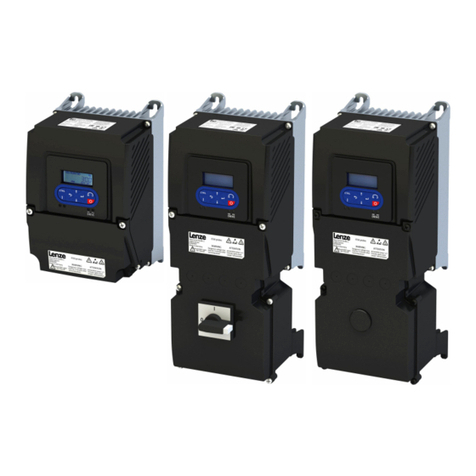
Lenze
Lenze i550 Series Mounting and switch-on instructions
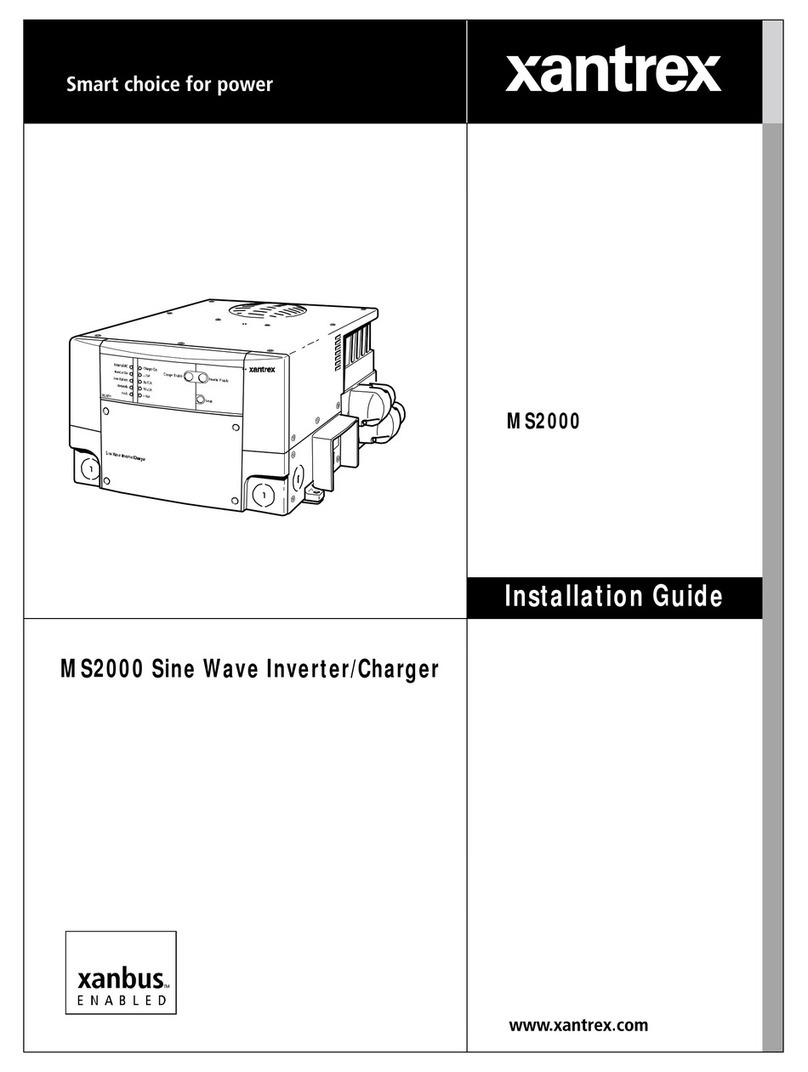
Xantrex
Xantrex MS2000 installation guide
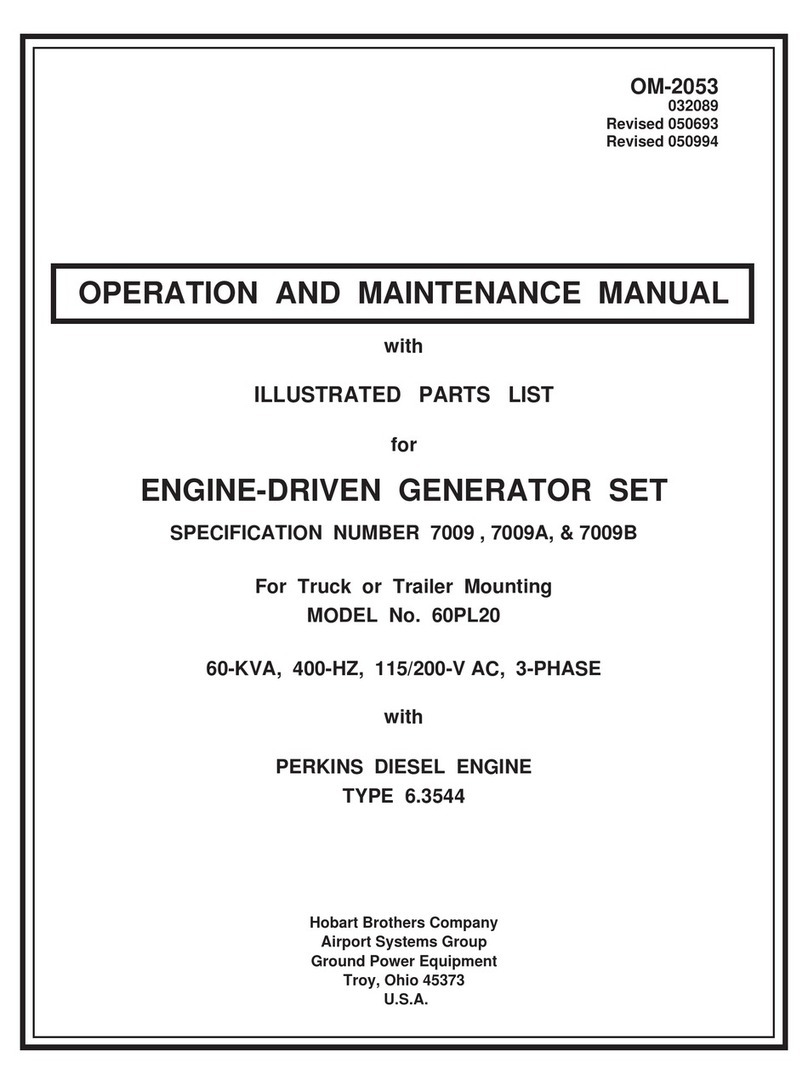
Hobart
Hobart 60PL20 Operation and maintenance manual
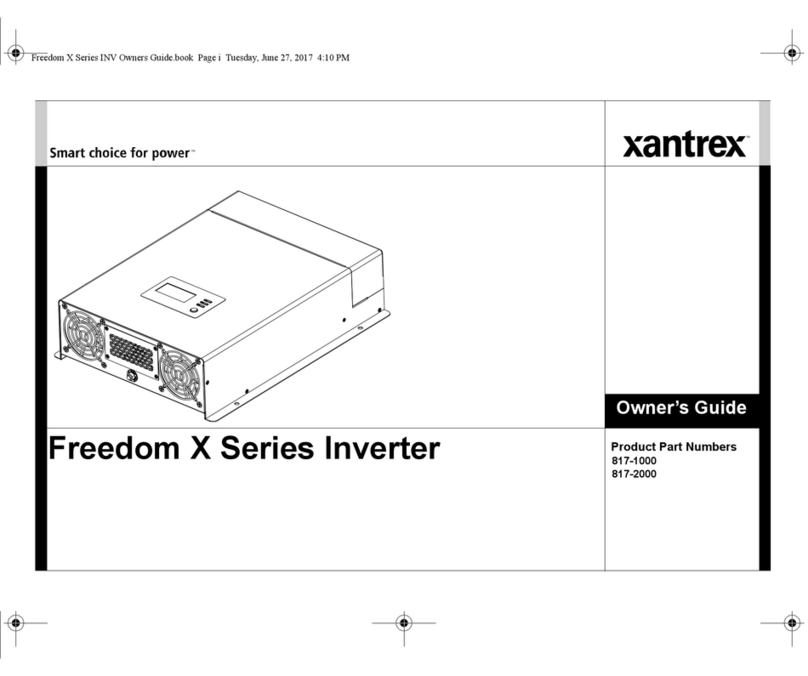
Xantrex
Xantrex 817-1000 owner's guide

